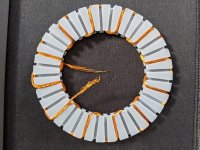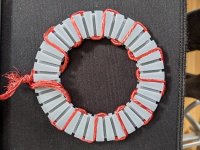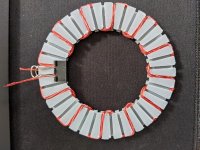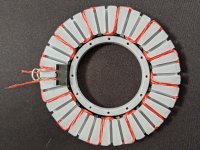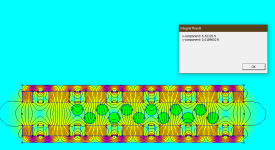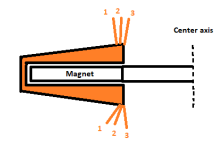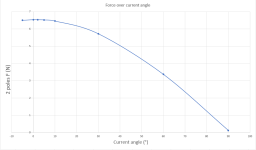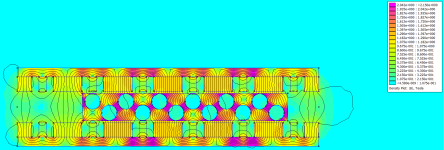Thecoco974
10 W
- Joined
- Dec 7, 2016
- Messages
- 94
HalbachHero said:yeah I'm not quite sure either. I thought there was a relationship that worked nicely with the 9 teeth and 12 pole axial flux motors but I have 36 teeth and 24 poles and it has been working. Down the road. I will experiment with that. But I think I need to nail down the stator first.
Actually I think number of teeth (stator poles) vs rotor pole is easy for coreless design, i'm pretty sure we can just go with the number of stator poles equal to rotor poles. For traditionnal steel core design it's actyally a big thing, trying to limit cogging torque with overlapping pôles, but also a compromise because doing that not all the teeth contribute equally to torque and reduce overall efficiency. My concerns are more on the coil shape vs magnetic field shape and efficiency related to those changes.
HalbachHero said:You could show a pseudo 3D image by integrating over the radius of an axial flux motor. I imagine kind of like an MRI. multiple images of a 2D cross section over a distance, and you could construct a 3D image from that. As a software engineer, that has had me thinking quite a bit. I don't know LUA yet, but not knowing something hasn't stopped me yet.
We are actually thinking at the same thing for sure. I'm really curious at seeing the 3D flux plot but software that can do it aren't really affordable. But more than just flux line actually, outputting the torque constant/Kv more accuratly than just by extrapolating values at midline would be a really big thing for us designing motors.
I don't know if you have played with that yet, but coils can also be added to FEMM (with actual diameter/number of strands/number of turn) and in our case the simulation output the Force in X plane giving the torque value (admitting that the correct value is added in the depth setting of the simulation), power loss can also be outputed.
Having a complete motor design simulation outputing efficiency plot/power curve might actually be possible at the expense of a lot of LUA programation. But to my understanding LUA is quite a pain of a language not looking like the other one in a lot of things ...


